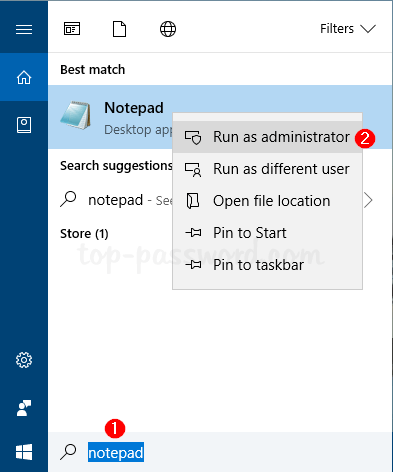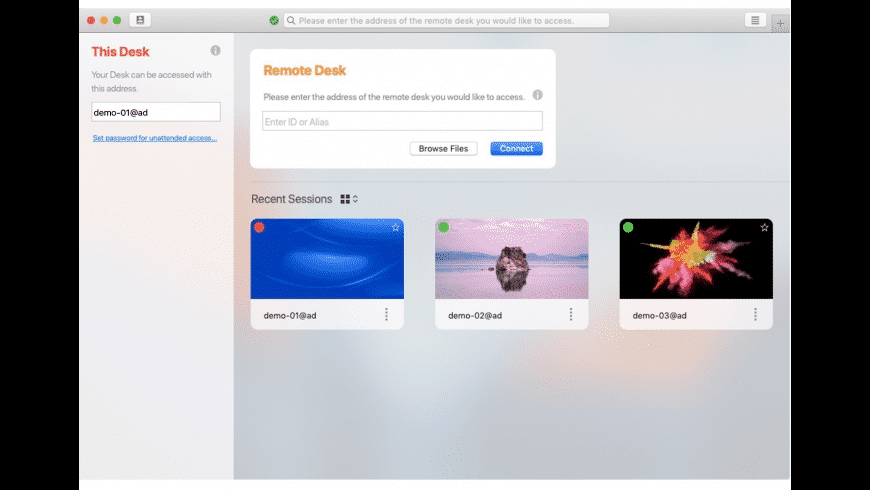You may be wondering Where is the “Hosts” File on a MAC? The host file is located in the /private/etc/hosts on your MAC. Because it is situated in a protected area of the system, you cannot directly open the file and edit it. The solution is to copy the file to an unprotected location for example desktop and then make the modifications. The easiest way to find the host file is to use the Finder tool. When you have launched the Finder tool, you can select Go to Folder and enter the file location /private/etc/hosts. Now, you must select the “hosts” file with your mouse cursor and drag it to the desktop. Doing so will unlock the file and enable you to edit it.
- Mac Os Host File Location
- Mac Hosts File Wildcard
- Reset Hosts File Mac
- Default Hosts File Macos
- Default Hosts File For Mac Osx
To open the hosts file use the command below (you can Copy and Paste it directly into the terminal window). Sudo nano /private/etc/hosts. Press the return key.Terminal will ask you for a password.Enter the Administrator password for your Mac. As you enter the password the characters will not appear on screen, this is a privacy feature included in Terminal, simply hit. Step 2 Open the hosts file Open the hosts by typing on the Terminal that you have just opened: $ sudo nano /private/etc/hosts Type your user password when prompted. Step 3 Edit the hosts file The hosts file contains some comments (lines starting with the # symbol), as well as some default hostname mappings (e.g. 127.0.0.1 localhost). This is the default location of hosts file in Mac OS X: /private/etc/hosts. And, here is the way to edit the file. Open terminal and type this command: sudo nano /private/etc/hosts. And it will ask your system password once you enter the password, you will see a screen like this.
Editing the Hosts File on a MAC
To edit the host file, you must first open it by double clicking it. You will notice that it is a simple file that contains just a few lines of text and characters such as pound and hash tags. The file also list the IP address of the localhost and broadcasthost. Before making changes on the hosts file, you should first backup the files. The hosts file can be backup by entering the hosts backup command in the terminal app. When making edits in the file, you cannot use mouse click as the mouse has been disabled in the text editor. Instead, you are to use the arrow keys to travel to different lines.
Blocking Access to Certain Websites with the Hosts File
For some people, they edit the host file in order to block the user from accessing a certain site on the Mac system. If you want to block access to a specific website, you must map the particular website you want to block to an invalid IP address such as 0.0.0.0 so that the browser won’t be able to display the page when someone tries to enter the URL.
Enter the Redirected URLs into the Hosts File
If you don’t want to redirect the website to an invalid IP address, you can enter the valid IP address of the site where you want the user to be redirected. In this way, the user will be redirected to a different site when he attempts to visit the site with the browser. You can find out the IP address of a website by sending a ping to the site via the Terminal. You must quickly record down the returned IP address on a text editor so that you won’t enter the wrong number into the file.
The entry should be entered in the format of the IP address followed by a space and then domain name. There is no limit as to how many entries of IP addresses you can enter into the host file. Every line should have only one entry. It is advised that you don’t delete the entries previously entered as they are required to be processed by the system when it is booting. As soon as you have entered a new entry, you should press Control + O key to confirm that you want the modifications on the file to be applied to the original version in /private/etc/hosts/.
Testing the Hosts File to See if it Works Properly
Mac Os Host File Location
After you have finished making the modifications, you must copy and paste the hosts file back to the original location. There will be a prompt that ask you whether you want to replace the file. To authenticate the file replacement, you must enter your administrative password. After the file is replaced, you can enter the URL in your browser to see whether the changes have been effected. You may have to delete the existing DNS cache in order for the effect to take place. To delete the existing DNS cache, you can enter the syntax dscacheutil -flushcache into the terminal.
Conclusion
In conclusion, it is very easy to locate the hosts file and make edits to control the sites other users will see. You can try turning off your computer and restart the system again if the website did not display properly after you followed the steps above. Sometimes, you need to quit all open browsers in order for the changes to take effect.
mountaindogmedia left the following comment on my post for installing Apache, PHP, and MySQL on Mac OS X:
Jason, have you tried a modified Include statement for virtual hosts to map a directory? So instead of /etc/apache2/extra/httpd-vhosts.conf as indicated, one would use /etc/apache2/extra/vhosts/*.conf and then just create a default.conf for the first virtual host, and then add/edit/delete vhost files as needed. I think it would be easier to manage host files and changes.

Indeed, mountaindogmedia, this is an easier way. In fact, this is the default configuration for many servers.
By default, the Apache Virtual Host configuration on Mac OS X is located in a single file: /etc/apache2/extra/httpd-vhosts.conf. You need to edit the Apache configuration to include this file and enable virtual hosts.
Over the years, I have created many virtual hosts. Each time editing httpd-vhosts.conf. To mountaindogmedia's point, this becomes difficult to manage. Furthermore, Apache configurations often get reset when upgrading Mac OS X. In the same amount of steps (two), you can adopt a more manageable configuration.
What are Virtual Hosts?
From the Apache Virtual Host documentation:
The term Virtual Host refers to the practice of running more than one web site on a single machine.
By default, the Apache configuration on Mac OS X serves files from /Library/WebServer/Documents accessed by the name locahost. This is essentially a single site configuration. You could mimic multiple sites by creating subdirectories and access a site at localhost/somesite.
This is not ideal for several reasons. Primarily, we would rather access the site using a name like somesite.local. To do that, you need to configure virtual hosts.
A Cleaner Configuration
Mac Hosts File Wildcard

Before I being, I assume you already installed and configured Apache on Mac OS X.
First, open the Terminal app and switch to the root user to avoid permission issues while running these commands.
Edit the Apache configuration file:
Find the following line:
Below it, add the following line:
This configures Apache to include all files ending in .conf in the /private/etc/apache2/vhosts/ directory. Now we need to create this directory.
Create the default virtual host configuration file.
Add the following configuration:
I create this file to serve as the default virtual host. When Apache can not find a matching virtual host, it will use the first configuration. By prefixing this file with an underscore, Apache will include it first. Techincally this file is not needed as it simply repeats the configuraton already in httpd.conf. However, it provides a place to add custom configuration for the default virtual host (i.e. localhost).
Now you can create your first virtual host. The example below contains the virtual host configuration for my site. Of course, you will want to substitute jasonmccreary.me with your domain name.
Reset Hosts File Mac
Create the virtual host configuration file:
Add the following configuration:
This VirtualHost configuration allows me to access my site from http://jasonmccreary.local for local development.
Note: I use the extension local. This avoids conflicts with any real extensions and serves as a reminder I am developing in my local environment.
Note: The Require all granted configuration became available in Apache 2.4 which comes with Mac OS X Yosemite. If you are running a version of OS X before Yosemite, use the equivalent 2.2 configuration in the upgrading Apache examples.


The final step is to restart Apache:
If you run into any problems, run:
Canon printer driver for Mac. Canon printer driver for Mac. Free Canon Mac/OS Classic Version updates Full Specs. Download.com has chosen not to provide a direct-download link for this product. Drivers for mac cannon printer. SOFTWARE & DRIVERS. Search for your product to get started. Select your model. GET PERSONALIZED SUPPORT THROUGH YOUR CANON ACCOUNT. Your Canon account is the way to get the most personalized support resources for your products. Already have an account? Manage your Canon products and keep them up-to-date.
This will test your Apache configuration and display any error messages.
Mapping the .local extension
In order to access sites locally you need to edit your hosts file.
Add a line to the bottom of this file for your virtual host. It should match the value you used for the ServerName configuration. For example, my site:
I like to run the following to clear the local DNS cache:
Now you can access your site using the .local extension. For example, http://jasonmccreary.local.
A note about permissions
You may receive 403 Forbidden when you visit your local site. This is likely a permissions issue. Simply put, the Apache user (_www) needs to have access to read, and sometimes write, to your web directory.
If you are not familiar with permissions, read more. For now though, the easiest thing to do is ensure your web directory has permissions of 755. You can change permissions with the command:
In my case, all my files were under my local ~/Documents directory. Which by default is only readable by me. So I had to change permissions from my web directory all the way up to ~/Documents to resolve the 403 Forbidden issue.
Note: There are many ways to solve permission issues. I have provided this as the easiest solution, not the best.
In Closing
Default Hosts File Macos
Any time you want to add a site to Apache on your Mac, simply create a virtual host configuration file for that site and map it in your hosts file.
Mf3200 driver download. Canon MF3200 Series: Canon Color imageRUNNER C3200, Canon's definition of true multifunctionality in color has finally been met. As the premier Color imagePlatform device, the Color imageRUNNER. Image.canon image.canon image.canon. Seamless transfer of images and movies from your Canon camera to your devices and web services. Creative Park Creative Park Creative Park. From easy craft ideas to origami-style 3D models – bring the paper fun into. CANON imageCLASS® MF3200 SERIES LIMITED WARRANTY. The limited warranty set forth below is given by Canon U.S.A. Inc., ('Canon USA') with respect to the Canon imageCLASS MF3200 Series packaged with this Limited Warranty (the 'Product') and which is purchased and used in the United States, subject to the conditions below. Canon printer mf3200 series free download - Canon MF3200 Series, Canon BubbleJet Printer Driver, Canon BJ Series Printer Driver for Windows Millenium/98/95/3.1, and many more programs.
Default Hosts File For Mac Osx
Find this interesting? Let's continue the conversation on Twitter.
